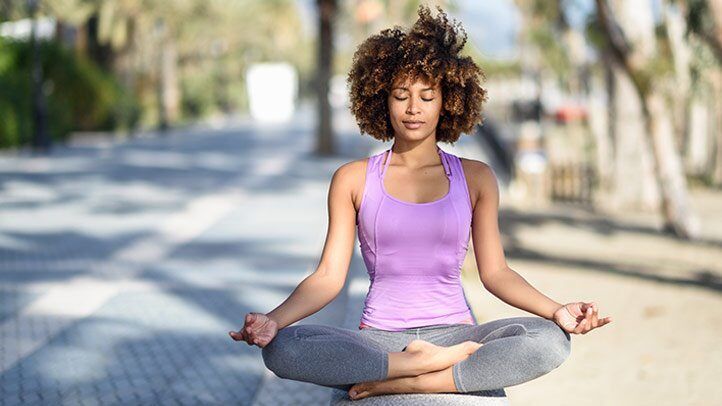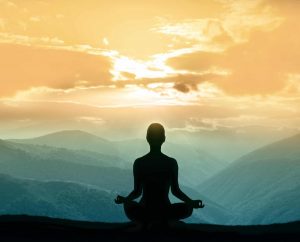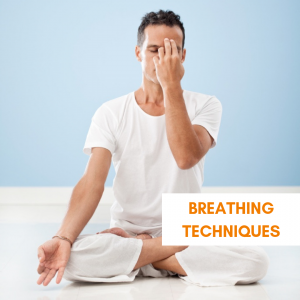
Mindfulness and Meditation in Yoga

Mindfulness and meditation are integral components of yoga, extending its benefits beyond the physical postures. They cultivate a deeper connection between body and mind, promoting relaxation, stress reduction, and overall well-being. This section will explore the role of mindfulness in yoga practice, guide you through a beginner’s meditation, and offer practical tips for integrating mindfulness into your daily life.
Mindfulness, in the context of yoga, involves paying attention to the present moment without judgment. It’s about observing your breath, body sensations, thoughts, and emotions as they arise, without getting carried away by them. This awareness helps you to connect with your inner self and develop a greater understanding of your physical and mental states. By cultivating mindfulness during your yoga practice, you can enhance your awareness of your body’s alignment, improve your balance and coordination, and deepen your connection to the postures.
Guided Meditation for Relaxation and Stress Reduction
This guided meditation is designed to help you relax and reduce stress. Find a comfortable position, either sitting or lying down. Close your eyes gently.
Begin by bringing your attention to your breath. Notice the natural rhythm of your inhales and exhales. Feel the air entering your nostrils, filling your lungs, and then gently leaving your body. Don’t try to change your breath; simply observe it. If your mind wanders, which it inevitably will, gently guide your attention back to your breath.
Now, turn your attention to your body. Notice any sensations – tingling, warmth, coolness, tension. Acknowledge these sensations without judgment. Simply observe them as they are. If you notice tension, imagine it melting away with each exhale.
Next, bring your awareness to your thoughts and emotions. Notice any thoughts that arise, without getting carried away by them. Observe them like clouds passing in the sky. If you notice any negative emotions, such as anxiety or frustration, acknowledge them without judgment. Simply observe them and allow them to pass.
Continue to focus on your breath, body, and mind for a few more minutes. When you are ready, gently bring your awareness back to the room. Wiggle your fingers and toes. Take a few deep breaths and open your eyes.
Incorporating Mindfulness into Daily Life
The benefits of mindfulness extend far beyond the yoga mat. Here are some practical tips for incorporating mindfulness into your daily life:
Mindful eating: Pay attention to the taste, texture, and smell of your food. Eat slowly and savor each bite.
Mindful walking: Pay attention to the sensation of your feet on the ground, the movement of your body, and the sights and sounds around you.
Mindful breathing: Throughout the day, take a few moments to focus on your breath. This can help to calm your mind and reduce stress.
Mindful listening: When you are talking to someone, give them your full attention. Listen without interrupting or formulating your response.
Mindful moments: Throughout your day, take a few moments to simply be present. Notice the sights, sounds, smells, and sensations around you. This could be as simple as observing the clouds in the sky or listening to the birds sing.
Setting Up Your Home Yoga Practice

Embarking on a home yoga journey requires thoughtful preparation. Creating a dedicated space and gathering a few essential tools will significantly enhance your practice, making it more comfortable, consistent, and enjoyable. This section will guide you through setting up your personal yoga sanctuary.
Essential Equipment for Home Yoga
Having the right equipment can make a big difference in your comfort and ability to perform yoga poses correctly. While you can certainly start with minimal equipment, these items can greatly enhance your practice. A well-equipped space allows for greater exploration of various postures and supports a more focused practice.
- Yoga Mat: A non-slip yoga mat provides cushioning, comfort, and grip, preventing slips and protecting your joints. Look for mats made of materials like natural rubber or PVC, considering thickness and stickiness based on your preferences.
- Yoga Blocks: Blocks are versatile props that support proper alignment and make poses more accessible, particularly for beginners. They can help you reach the floor more easily or modify poses to accommodate your flexibility level. Choose blocks made of cork, foam, or wood.
- Yoga Strap: A strap aids in deepening stretches and improving flexibility. It can help you reach your toes or lengthen your spine, making poses more accessible and reducing strain. Look for a durable strap made of cotton or other flexible materials.
- Bolster (Optional): A bolster provides support for restorative poses and seated meditation, enhancing relaxation and comfort. It’s particularly beneficial for those with back pain or limited flexibility.
Creating a Comfortable Yoga Space
Your yoga space should be a haven for relaxation and focus. A calm, dedicated area promotes a more mindful and effective practice. The following considerations will help you transform a corner of your home into your personal yoga studio.
Choose a quiet area, free from distractions, where you can comfortably move around without obstacles. Good ventilation and natural light are ideal, but soft lighting can also create a calming ambiance. Consider adding elements that enhance relaxation, such as a scented candle (with proper ventilation), calming music, or a small plant. Keeping the space clean and tidy further contributes to a sense of peace and focus.
Ensure the space is adequately warm; a slightly warmer room is generally more comfortable for yoga practice.
Sample 15-20 Minute Beginner Home Yoga Routine
This routine focuses on foundational poses, promoting flexibility, strength, and relaxation. Remember to listen to your body and modify poses as needed.
- Mountain Pose (Tadasana): 1 minute – Stand with feet hip-width apart, grounding down through your feet. Lengthen your spine, relax your shoulders, and engage your core.
- Forward Fold (Uttanasana): 1 minute – Bend forward from the hips, keeping your spine long. Let your head hang heavy, relaxing your neck and shoulders.
- Downward-Facing Dog (Adho Mukha Svanasana): 1 minute – Form an inverted V-shape with your body, pressing into your hands and feet. Pedal out your feet to release tension in your calves and hamstrings.
- Plank Pose: 30 seconds – Hold a plank position, keeping your body in a straight line from head to heels, engaging your core and glutes.
- Child’s Pose (Balasana): 1 minute – Rest in child’s pose, relaxing your forehead on the mat and letting your arms rest alongside your body.
- Warrior II (Virabhadrasana II): 1 minute per side – Step your feet wide apart, turning your right foot out 90 degrees. Bend your right knee, keeping it aligned over your ankle. Extend your arms to the sides, gazing over your right hand.
- Tree Pose (Vrksasana): 30 seconds per side – Stand on one leg, bringing the sole of your other foot to your inner thigh or calf. Bring your hands to your heart center, focusing on balance.
- Corpse Pose (Savasana): 3-5 minutes – Lie on your back with arms relaxed by your sides, palms facing up. Close your eyes and allow your body to fully relax.

